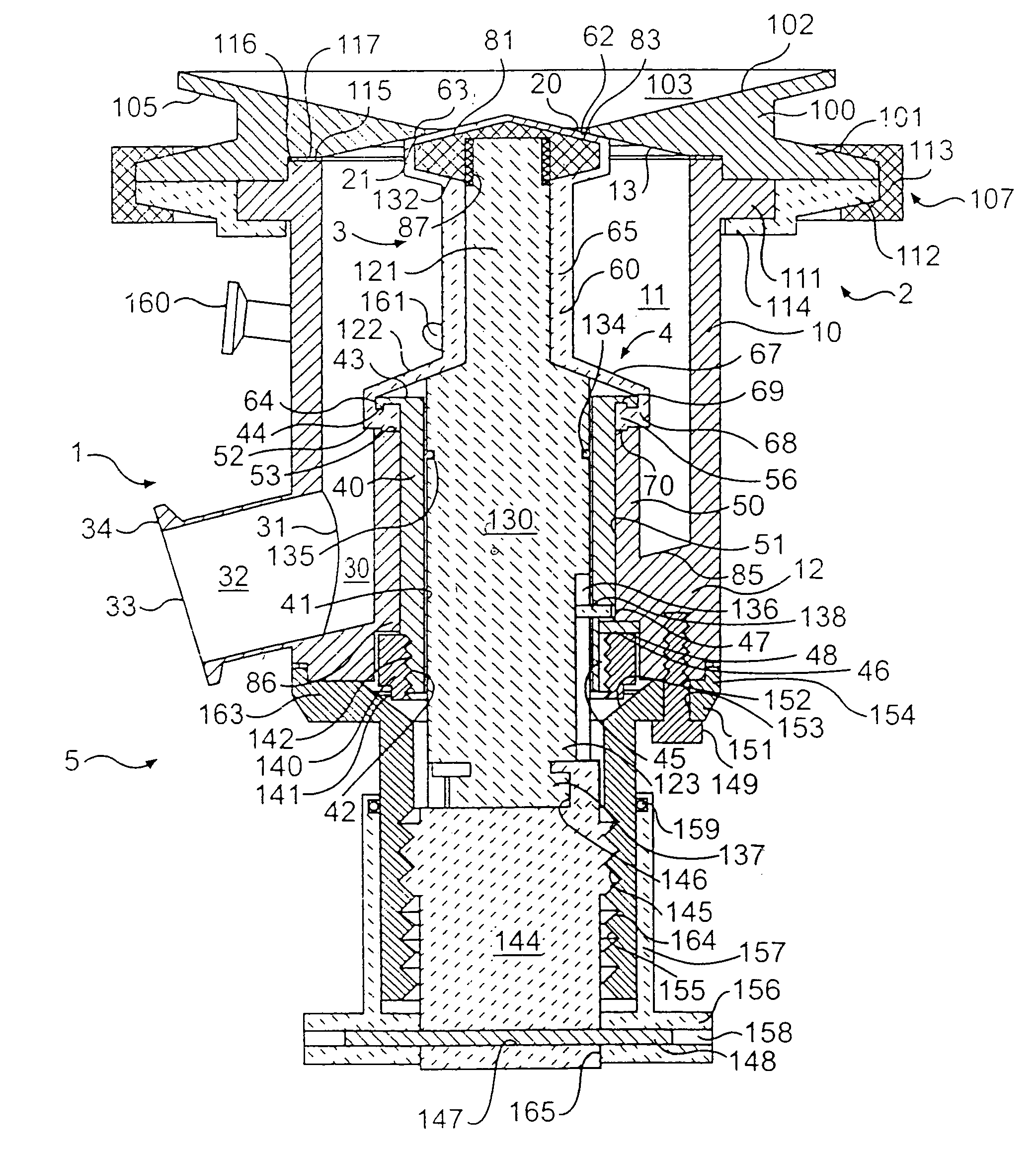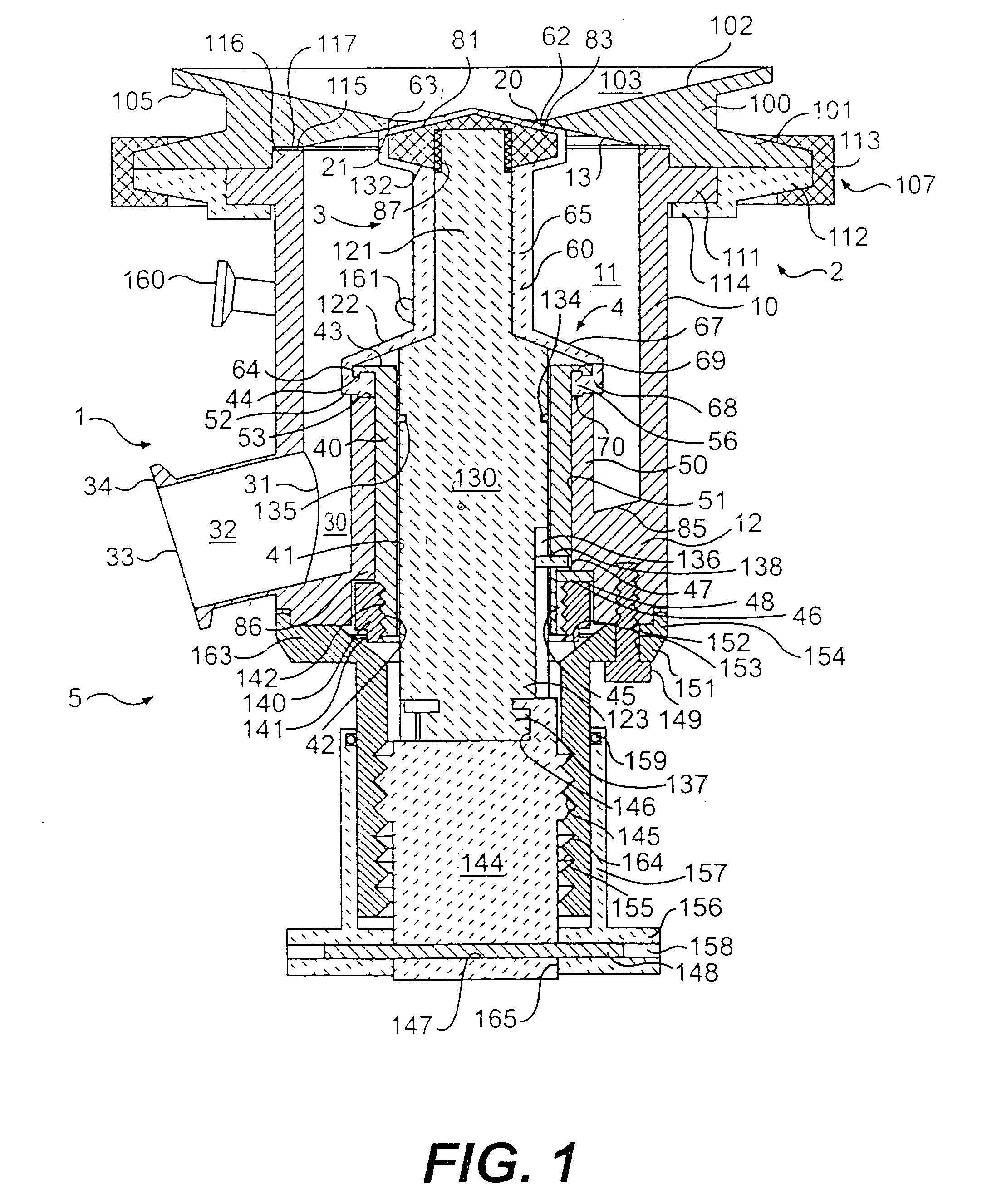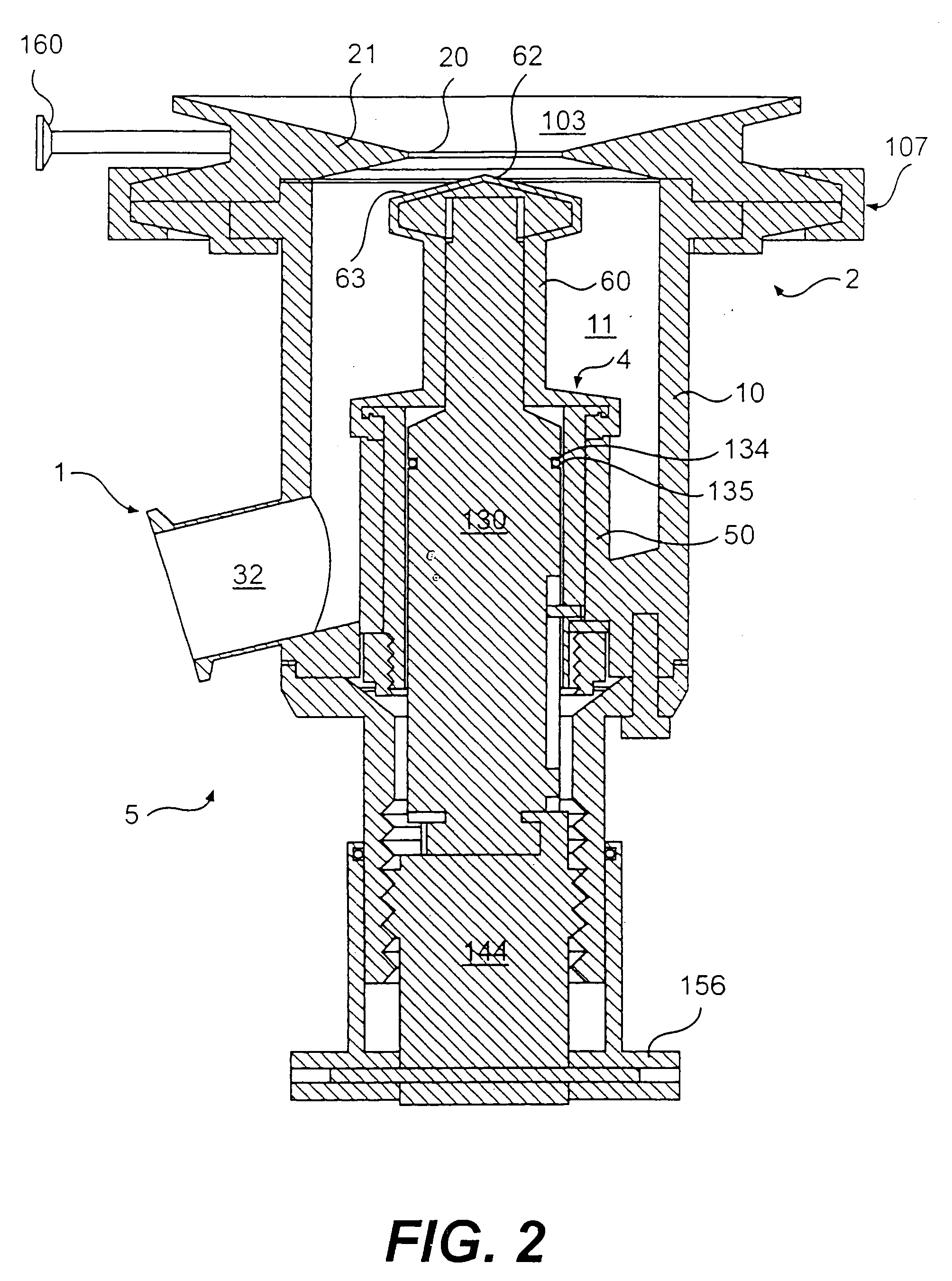Sanitary drain valve design
a technology of sanitary drain valve and design, which is applied in the direction of diaphragm valve, valve housing, engine diaphragm, etc., can solve the problems of loss of product, harm to consumers, and contamination source traceability, and achieve the effects of improving the ability of cleanability and drainability, and good characteristics of process isolation and in-situ cleanability
- Summary
- Abstract
- Description
- Claims
- Application Information
AI Technical Summary
Benefits of technology
Problems solved by technology
Method used
Image
Examples
Embodiment Construction
[0041] In general, the device of the present invention includes a valve body equipped with a manual, automated or combination actuator capable of moving a sealing tip attached to a valve operating rod reversibly into a sealing condition with a valve seat surrounding a first inlet flow passage into an internal cavity in the valve body. The valve body has at least one outlet flow passage placed at the bottom of the internal valve body cavity to receive drainage, the bottom preferably but not necessarily being cantilevered or otherwise formed so as to assist drainage down to at least one outlet flow passage. A seal is formed between the static valve body and the dynamic valve actuating rod in which, whether an O-ring seal or diaphragm seal is used, the interface between the sealing elements is carried out in a face-down configuration so as to create a self-draining sealing interface and to eliminate the pooling that is associated with sump or well areas that occur in the annular space ...
PUM
 Login to View More
Login to View More Abstract
Description
Claims
Application Information
 Login to View More
Login to View More - R&D
- Intellectual Property
- Life Sciences
- Materials
- Tech Scout
- Unparalleled Data Quality
- Higher Quality Content
- 60% Fewer Hallucinations
Browse by: Latest US Patents, China's latest patents, Technical Efficacy Thesaurus, Application Domain, Technology Topic, Popular Technical Reports.
© 2025 PatSnap. All rights reserved.Legal|Privacy policy|Modern Slavery Act Transparency Statement|Sitemap|About US| Contact US: help@patsnap.com



